Posted: January 14th, 2016 | No Comments »
I only came across the autobiography of Margaret Lyons, better known to wartime and post-war American newsreaders as Pegge Parker, recently – Alias Pegge Parker. I did know her rather better known, in China- and Asia-Hand circles anyway, journalist (second) husband John Hlavacek (below).


Pegge Parker had been building a reputation in DC before shipping out to post-war Shanghai as a freelancer. Her autobiography is a useful description of 1946/1947 Shanghai and UNRRA’s efforts in China. Her first marriage to Douglas Mackiernan, CIA agent in China and the first CIA man to be killed on duty, involved Shanghai life. That whole story is told in Thomas Laird’s Into Tibet, by the way.

She had twins in the US Army Hospital in Shanghai in 1947 – which was then on the ground floor of the Shanghai Mansions (formerly Broadway Mansions) just over the Garden Bridge.After Mackiernan’s death Pegge met John in Shanghai and they married. John Hlavacek was posted to the Chongqing US attacheÌ’s office following Pearl Harbour when the stakes increased dramatically for America overnight. Originally from La Grange, Illinois, Hlavacek had come to China in 1939 and spent a couple of years teaching English in Japanese-occupied Shanxi, followed by a stint driving Red Cross trucks to deliver medical supplies to mission hospitals, before he was sent to Chongqing where he stayed until 1944.

During World War II, Margaret Lyons, a small-town Pennsylvania girl, had a taste for adventure. She began her career as an advice columnist, adopting the pen name Pegge Parker. She set out to literally write her way around the world. Before long, she was headed for China where she met and married Douglas Mackiernan, an undercover CIA agent. The couple became the proud parents of twins, Mike and Mary. Agent Mackiernan was killed by border guards near Tibet, leaving Pegge a single mother. Pegge would soon meet John Hlavacek, the United Press Bureau Chief she would remain married to for the rest of her life. Pegge’s life and career were nothing if not spontaneous, seemingly weaved by fate’s colorful loom. Her prose style of writing is unmistakable, and transports the reader back in time, allowing them to understand and experience life as she knew it more than half a century ago. Alias Pegge Parker also includes four original chapters from Pegge’s next book, Diapers on a Dateline. John discovered the chapters in Pegge’s belongings after Diapers was published, and after she had developed Alzheimer’s disease.
Posted: January 13th, 2016 | No Comments »
If you’re in Shanghai and need some fresh reading material then head to the RAS’s New Year book sale at the RAS Library. As usual, they’ll be selling their spare and duplicate books to raise money to buy new acquisitions.
When: Sunday 24th January, 2pm – 5pm
Where: Room 206, Sino-British College, 1195 Fuxing Zhong Lu, near Shaanxi Nan Lu

Posted: January 12th, 2016 | No Comments »
I’m hoping someone out there might have access to an archive of old Liberty Magazines – perhaps online (none of my libraries have the online archive) or a stack in a garage somewhere. We’re looking for January 1935 because who could resist this tale…

James Warner Bellah was better known for his westerns – the Virginian series, Fort Apache, She Wore a Yellow Ribbon, the Man Who Shot Liberty Valance, Rio Grande etc – but in 1935 he took a little excursion “somewhere south of Shanghai” for his series Passport to Hell. I don’t think Warner Bellah had any direct experience of China – though later in WW2 he did serve in the Far East. Passport to Hell ran over several issues of Liberty from January 1935 (starting in the 12th January issues) and running through to late February in (I think) seven episodes, all with illustrations by Harry T. Fisk and decorations by Carl Pfeufer.
Anyone got copies?
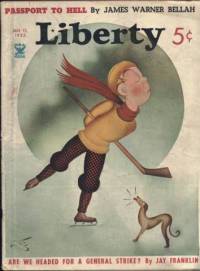 The first episode in the January 12th 1935 issue of Liberty
The first episode in the January 12th 1935 issue of Liberty
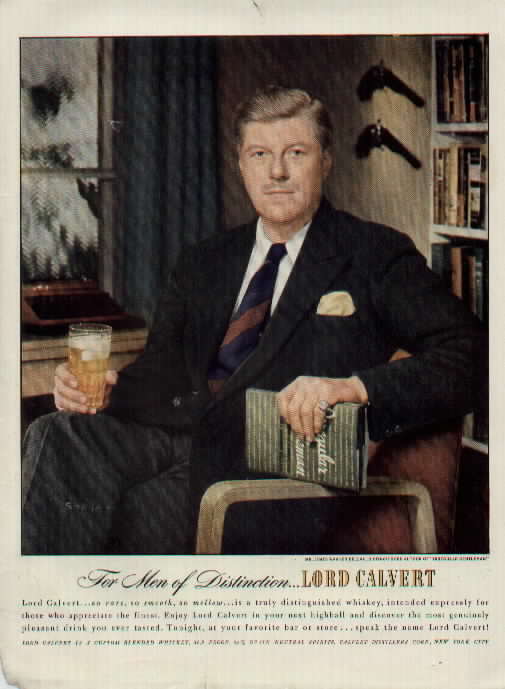 James Warner Bellah advertising Lord Calvert whiskey
James Warner Bellah advertising Lord Calvert whiskey
Posted: January 11th, 2016 | No Comments »
Xing Hang’s history of the Zhang clan of merchants and militarists…and their rivals the East India Company…looks like a good read….
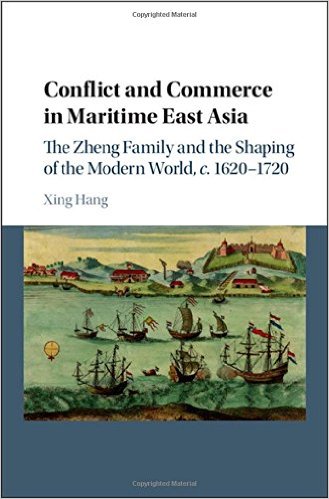
The Zheng family of merchants and militarists emerged from the tumultuous seventeenth century amid a severe economic depression, a harrowing dynastic transition from the ethnic Chinese Ming to the Manchu Qing, and the first wave of European expansion into East Asia. Under four generations of leaders over six decades, the Zheng had come to dominate trade across the China Seas. Their average annual earnings matched, and at times exceeded, those of their fiercest rivals: the Dutch East India Company. Although nominally loyal to the Ming in its doomed struggle against the Manchus, the Zheng eventually forged an autonomous territorial state based on Taiwan with the potential to encompass the family’s entire economic sphere of influence. Through the story of the Zheng, Xing Hang provides a fresh perspective on the economic divergence of early modern China from western Europe, its twenty-first-century resurgence, and the meaning of a Chinese identity outside China.
Posted: January 10th, 2016 | No Comments »
Having posted on the fascinating subject of Chinese typewriters before – and Lin Yutang’s involvement in their development – this exhibition piqued my interest. The details are all here.
The Chinese Typewriter: The Art and Science of East Asian Information Technology
January 11, 2016 – September 12, 2016
Lathrop East Asia Library, Stanford
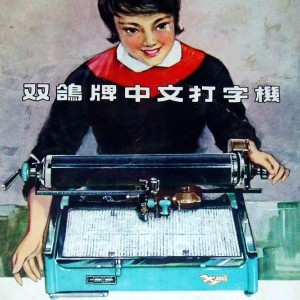
Posted: January 9th, 2016 | No Comments »
Stephen Craft’s American Justice in Taiwan is centred on a murder of a Chinese officer by an American one and the riots and implications for Taiwan-US relations stemming from that…

On May 23, 1957, US Army Sergeant Robert Reynolds was acquitted of murdering Chinese officer Liu Ziran in Taiwan. Reynolds did not deny shooting Liu but claimed self-defense and, like all members of US military assistance and advisory groups, was protected under diplomatic immunity. Reynolds’s acquittal sparked a series of riots across Taiwan that became an international crisis for the Eisenhower administration and raised serious questions about the legal status of US military forces positioned around the world.
In American Justice in Taiwan, author Stephen G. Craft provides the first comprehensive study of the causes and consequences of the Reynolds trial and the ensuing protests. After more than a century of what they perceived as unfair treaties imposed by Western nations, the Taiwanese regarded the special legal status of resident American personnel with extreme distrust. While Eisenhower and his advisers considered Taiwan to be a vital ally against Chinese communism, the US believed that the Taiwanese government had instigated the unrest in order to protest the verdict and demand legal jurisdiction over GIs. Regardless, the events that transpired in 1957 exposed the enormous difficulty of applying the US’s Uniform Code of Military Justice (UCMJ) across cultures.
Employing meticulous research from both Western and Chinese archives, Craft demonstrates that the riots were only anti-American in that the Taiwanese rejected the UCMJ, the affording of diplomatic immunity to occupying US forces, and the military courts’ interpretation of self-defense. His compelling study provides a new lens through which to examine US–Taiwan relations in the 1950s, US policy in Asia, and the incredibly charged and complex question of the legal status of US troops on foreign soil.
Posted: January 8th, 2016 | 2 Comments »
In 1938 the celebrated Cooling Gallery in London at 92 New Bond Street launched a new exhibition with a new artist – a Chinese artist called Plato Chan, who was just 8-years old. Plato’s art was put to a good use – the publisher Victor Gollancz organised Palto’s shows in London to raise funds for the China Campaign Committee.
Plato Chan’s father was in the Chinese diplomatic service and the family traveled all over Europe and Asia, living in Germany, France, England, Greece, India and China, and many other places. In 1938, after the Japanese invasion of China and just before the onset of war in Europe the Chan’s found themselves posted to the Chinese Embassy in London on Portland Place. It seems his mother, Madame Chih-Yi Chan, was his greatest publicist – his father seems to have remained somewhat more in the background. He also collaborated with his sister Christina. As to his slightly odd name – Mrs. Chan explained that in 1931, the year Plato was born, a new planet was discovered. Plato’s parents regarded this as something of a portent. Slightly odd as it was Pluto that was discovered in 1930, not Plato.
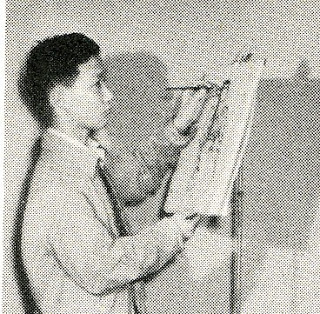 Plato Chan’s work was actually quite popular – Mollie Panter-Downes, the author of the New Yorker’s “Letter from London” during the war, attended a 1939 show of Plato’s at Coolings and was impressed with both the art and the good cause. He had quite a career – he is said to have started painting at just 18 months and reputedly began designing patterns for French fabric companies before the war (i.e. when he was about 6 or 7!!). He also exhibited in Paris and elsewhere in Europe, as well as London, and, it was claimed, painted a portrait of Elizabeth Bowes-Lyon (Queen Elizabeth then, later the Queen Mother) – though I have no idea where that portrait is now. The story goes that Plato hand-delivered it to Buckingham Palace. When World War Two broke out I think the Chan family was at the Chinese embassy in Berlin and Plato’s father was sent to an internment camp in Germany. Plato, his sister Christina and and the rest of the family, went to New York. It was there that his mother adapted a traditional Chinese tale for her son to illustrate. The Good Luck Horse was published in 1943, when Plato was barely thirteen years old.
Plato Chan’s work was actually quite popular – Mollie Panter-Downes, the author of the New Yorker’s “Letter from London” during the war, attended a 1939 show of Plato’s at Coolings and was impressed with both the art and the good cause. He had quite a career – he is said to have started painting at just 18 months and reputedly began designing patterns for French fabric companies before the war (i.e. when he was about 6 or 7!!). He also exhibited in Paris and elsewhere in Europe, as well as London, and, it was claimed, painted a portrait of Elizabeth Bowes-Lyon (Queen Elizabeth then, later the Queen Mother) – though I have no idea where that portrait is now. The story goes that Plato hand-delivered it to Buckingham Palace. When World War Two broke out I think the Chan family was at the Chinese embassy in Berlin and Plato’s father was sent to an internment camp in Germany. Plato, his sister Christina and and the rest of the family, went to New York. It was there that his mother adapted a traditional Chinese tale for her son to illustrate. The Good Luck Horse was published in 1943, when Plato was barely thirteen years old.



He later illustrated another adaptation of a traditional Chinese tale – The Magic Monkey – in conjunction with his sister…



I believe Plato later attended Columbia University in New York and died, aged 75, in Philadelphia in 2006.
PS: for the London history folk – here’s the block of 92-94 block of New Bond Street in 1953. Coolings was in the rooms above the shops. 92 is now a branch of the shirtmakers TM Lewin…
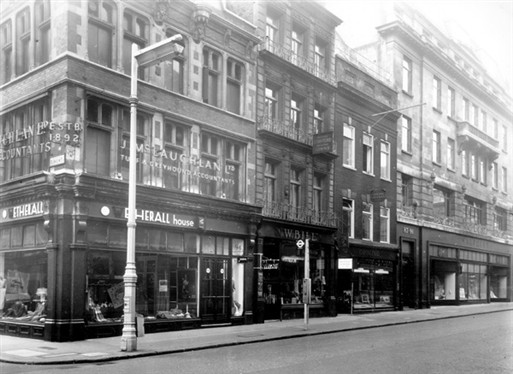
Posted: January 8th, 2016 | 1 Comment »
Pamela Werner – 7/2/17 – 8/1/37




















